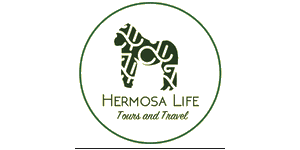mind-blowing
The Volcanoes National Park (in conjunction with the Virunga National Park in the Democratic Republic of Congo and the Mgahinga Gorilla National Park in Uganda) is renown as a haven for the rare and endangered mountain gorilla and golden monkeys
Based in Kigali we drove first to see Golden Monkeys.
These fascinating primates are quite used to tourists and, as such, one can approach to within a metre or so before they move away. The golden monkey is found in the Virunga volcanic mountains of Central Africa, including four national parks: Mgahinga, in south-west Uganda; Volcanoes, in north-west Rwanda; and Virunga and Kahuzi-Biéga, in the eastern DRC. It is restricted to highland forest, especially near bamboo. They live in social groups of up to 30 individuals, their diet consisting mainly of bamboo, leaves and fruit, and insects. Due to the gradual destruction of their habitat and recent wars in their limited habitat, the golden monkey is listed as endangered on the IUCN Red List.
Then to Iby'iwacu Cultural Village, Kinigi.
This project known as "Gorilla Guardians" is a Non-Profit umbrella organization that aims to improving the lives of reformed poachers and their communities around Rwanda's Volcanoes National Park through provision of conservation incentives, supporting community enterprise development and livelihood-based projects.
It is an unashamedly tourist-oriented enterprise which helps to fund the Gorilla Guardian work.
The village is fascinating, with a variety of cultural experiences where the visitor can learn about traditional agricultural working practices and participate in food preparation and processes such as: millet grinding using stones: carrying potatoes and water on their heads and preparing a local dish. Every evening the village members gather around a campfire and begin a session of storytelling and dancing.
The staff at the cultural village, the guides and porters who navigate tourists to the golden monkey sites and the trackers who take tourists to the trek the gorilla families, are almost exclusively ex-poachers (and their family members) who have been trained to use their former skills more productively in the development of tourism in the area and conservation that this funds.
As a result, gorilla poaching has declined to minimal levels over the last 10 years and the gorilla and monkey groups are thriving
Finally we crossed the border into Uganda, staying in Kisoro in preparation for gorilla trekking on mount Muhabara.
Muhabura, or Muhavura volcano, is the third highest peak and the steepest among the 8 volcanoes of the Virunga massif region. Located at the rim of Uganda and Rwanda, mount Muhabura lies both in the Volcanoes national park of Rwanda and the Mgahinga national park of Uganda.
The trek to find a gorilla family, can take 5-6 hours depending on the movement of the group of gorillas you are trekking - there is a briefing beforehand explaining the parameters within which you are permitted to interact with the gorilla group.
Once leaving base camp the climb is steep but can be accomplished within a single day. We left base camp at approx. 7:30 am: - our gorilla group had been spotted by trackers earlier the same day.
Within 2 hours of leaving base camp at about 10,000 ft. we came upon part of the group : - a female and two youngsters (a baby, about 11 months and a juvenile, about 4 years).
'Mum" was resting, the 4 year eating and baby was being a total pest to both of them as he climbed, fell down, and thumped his sibling.
These beautiful creatures, whilst wild, are habituated and treated us (2 porters, a guide and a guy with an AK 47) with total indifference. The 'baby', however did show interest, approaching us on a number of occasions and attempting to steal a small shiny camera!!
Within 10 minutes of our arrival - we were crouched in against trees silently taking photos - the silverback father arrived, checked us out and then proceeded to sit further up the slope and demolish branches from the small tree he had chosen to feed from.
Watching the small family, we saw reflections of humanity. The interaction between the individuals was intense, often tender and intensely moving. The silverback was magnificent, weighing approx. 250 kg, with a dark intelligent frown. Branches gave in to him without resistance.
Forty-five minutes later, the group became bored with us and wandered off to find further areas of vegetation on which they might graze. The trackers then took us to see two other (solitary) silverbacks, who were part of the same family, but not dominant, and thus not allowed to mate with the female.
We found all three trips: monkeys, cultural village and gorilla trek comparable with any other wild life experience, having previously been on safaris, dolphin watching, diving on the barrier reef etc., but the gorilla trek was undoubtedly the most rewarding and satisfying. We could talk about nothing else for days - I suspect that the gorillas were less impressed with us, pasty, skinny, humans.

![7-Day Highlights of Rwanda]()

![3-Day Rwanda Affordable Gorilla & Golden Monkey Trekking]()

![3-Day Rwanda Mountain Gorillas and Golden Monkeys Tour]()


 Rwanda Parks
Rwanda Parks












